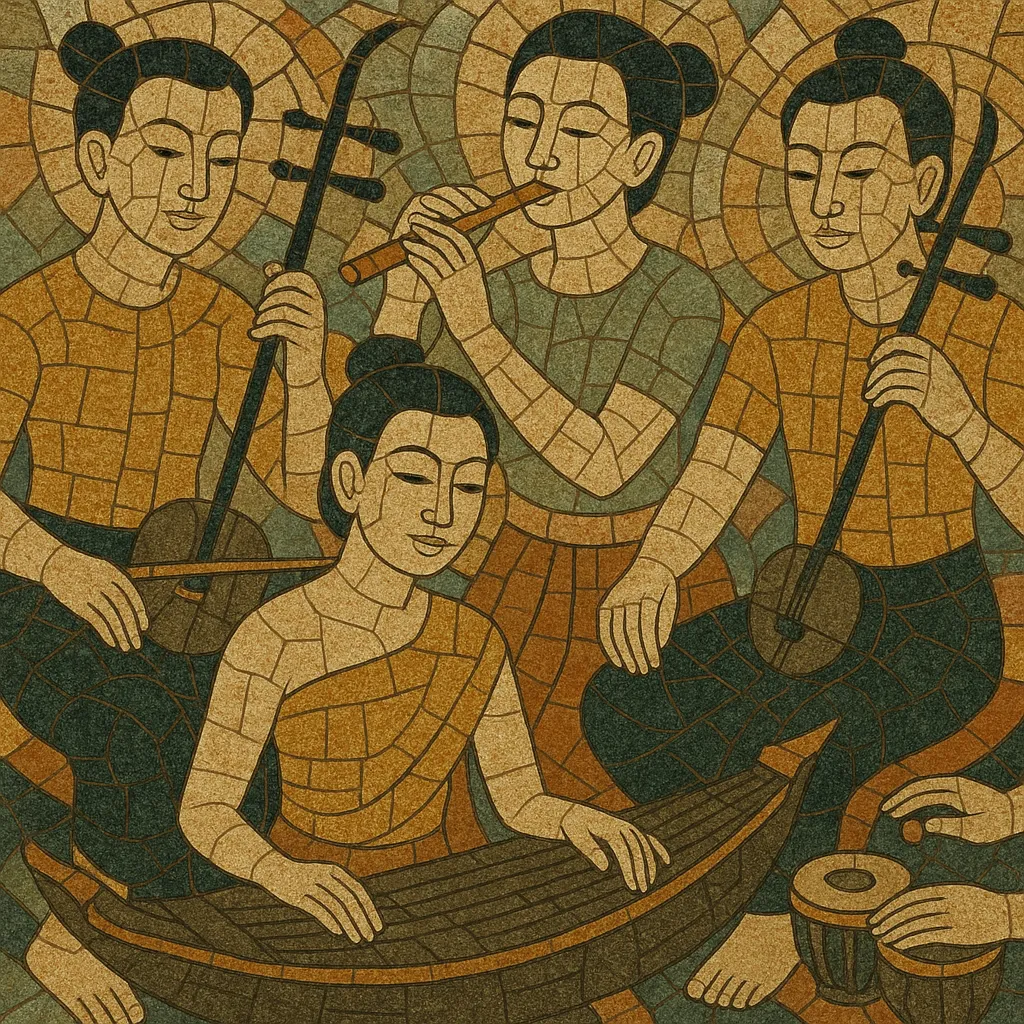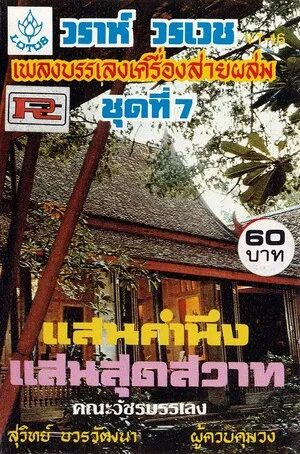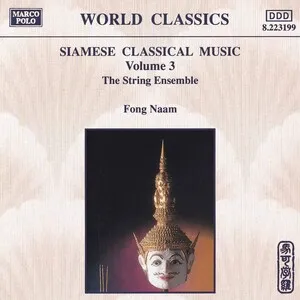Khrueang sai (literally “string ensemble”) is one of the principal ensembles in Thai classical music. It features a soft, indoor sound built around bowed and plucked strings, with bamboo flute and light percussion providing color and rhythmic articulation.
A typical khrueang sai ensemble centers on the saw duang (high two‑string spike fiddle), saw u (low two‑string spike fiddle), and the plucked zither jakhe, joined by the khlui (bamboo flute). Time is marked by a small pair of crash cymbals (ching) and a drum pair (thon–rammana). The texture is heterophonic: instruments simultaneously render the same melody with individualized ornamentation and rhythmic elaboration. The repertoire ranges from courtly pieces to social functions, favoring graceful, lyrical, and intimate expression.
Khrueang sai coalesced during the 19th century in central Thailand as a refined indoor counterpart to louder outdoor ensembles. Building on older court practices from late Ayutthaya, it took clearer shape in the early Rattanakosin period, when string instruments such as the saw duang and saw u, the plucked jakhe, and the bamboo khlui were standardized together with light percussion (ching, thon–rammana).
The ensemble flourished in palaces, noble households, and urban salons, accompanying refined entertainment, social gatherings, and certain dance dramas in more intimate settings. Its softer sonority contrasted with the more percussive piphat, while sharing a common melodic repertoire and modal sensibilities. Variants such as khrueang sai wong lek (small ensemble) and khrueang sai wong yai (large ensemble, sometimes adding the three‑string saw sam sai) were codified.
In the early–mid 20th century, master musicians and composers—among them Luang Pradit Phairoh (Sorn Silapabanleng), Montri Tramote, and royal patrons such as Prince Narisara Nuvadtivongs and Prince Paribatra Sukhumbandhu—expanded and arranged repertoire specifically for khrueang sai. Radio, recording, and formal conservatory teaching helped fix ensemble roles and transmission while preserving the idiom’s heterophonic performance practice.
Today khrueang sai remains central to Thai classical education and ceremony (e.g., weddings and intimate functions) and continues on concert stages. Its elegant textures and melodic vocabulary have informed urban Thai genres (notably luk krung) and contemporary fusions, while ensembles like Fong Naam have showcased traditional khrueang sai within innovative settings.
Use a core of saw duang (high two‑string fiddle), saw u (low two‑string fiddle), jakhe (plucked zither), khlui (bamboo flute), ching (small cymbals), and thon–rammana (paired hand drums). For a larger ensemble (wong yai), consider adding a second pair of saws, an extra jakhe, and occasionally the three‑string saw sam sai.
Adopt the central Thai seven‑step system (equidistant in theory, flexibly intoned in practice). Choose modal frameworks (thang) such as thang yai or thang noi, and maintain characteristic cadential targets. Keep intonation consistent within the ensemble and rely on auditory consensus rather than fixed notation.
Write a single principal melody (boran style) designed for heterophonic realization. Assign the khlui or saw duang to lead the melodic line. Let the saws employ slides, turns, and expressive bowing; have the jakhe articulate rhythmic‑melodic patterns and drones; and allow each instrument to ornament the line independently while staying in lockstep at phrase ends.
Organize phrases in cyclical periods (commonly 16 or 32 beats). Use ching patterns (open–close/"ching–chap") to articulate the cycle, with thon–rammana providing understated drum patterns and cadential lifts. Favor sectional forms that permit variation cycles (e.g., repeated strains with increasing ornamentation and density).
Aim for a soft, balanced timbre suitable for indoor spaces. Keep percussion light; prioritize blend between bowed and plucked strings, with the khlui adding airflow and lyrical motion. Use dynamics sparingly, shaping phrases with agogic nuance and coordinated breath/gesture rather than dramatic contrasts.
Compose in a way that supports oral/aural transmission. Skeleton melodies can be sketched in cipher or staff if needed, but rely on rehearsal to realize idiomatic ornamentation and ensemble heterophony.





